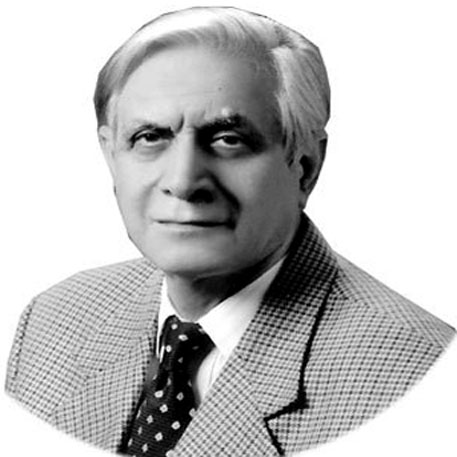Shift to left hand drive vehicles, progressive Pakistan
IT was 2005 while auto policy 2007- 2012 was being formulated. I raised the point in the meeting to shift to Left Hand Drive. My argument was, times have changed as we are now dealing with ME , Central Asia and China and all these countries are LHD.
The proposal was opposed by all OEMs as they represented Japanese brands. They also dump their second hand scrap vehicles in Pakistan.
Earlier, the point was raised in the fifties in the then NA but was shot down by the Assembly on flimsy argument: ME is a desert.
Irony, they were at that time using LHD American vehicles. The military vehicles till 1971 war were all LHD being of US origin.
Geo-economic and international milieu has completely changed. Pakistan is fully committed to the CPEC and its 2nd phase has already in advance stage. , New economic bloc comprising Turkey, Iran, Central Asia, Afghanistan, Russia and most important China are all LHD.
The only adjacent country is India and I see no activity for foreseeable future. Now coming to financial technical aspects, world over RHD vehicles are produced at 28% and rest 72 % are LHD vehicles. This makes RHD more costly world over due to volume economics.
The CKD of RHD vehicles is costly between 10-15 %. Whether we import built up or CKD, the vehicles cost higher than LHD vehicles.
As the government contemplating future connectivity through CPEC, Iran, Turkey and Central Asia, China and Russia, RHD vehicles cannot cross Pakistan borders and as for tractor for containers, at borders these are changed with LHD tractor puller that is at extra cost.
Coming to deletion as mentioned in the RHD the CKD is costly by 10-15 % and there is substantial increase in the cost of vehicle.
This is due to low volume and specially tailored CKD for the RHD vehicle by the Japanese assemblers and in case of military vehicles the cost is exceedingly very high.
Further future export of vehicles will be in LHD and if not adopted the market will remain very restricted. Barring in the domestic market.
The production of cars and trucks commenced from the sixties by General Motors. These vehicles and trucks all came mostly from USA and Europe. All were LHD. The old people will remember Chevrolet Impalas and smaller cars, all in LHD. The army till 1971 war used LHD vehicles.
The Japanese entered market in the late sixties, flourished in seventies when the US imports ceased. There has never been a problem to drive LHD vehicles.
In Japanese, they blocked the entry of new ideas and product and in RHD they started dumping substandard old generation vehicles in Pakistan.
Even now, the vehicles mostly are old versions and the cars and truck lack modern gadgetry and security features. The cost remains highest in Asia since they never rationalized deletion.
They gave higher percentage to small parts and sheet metal parts, thus effectively blocking transfer of technology. Further no organized effort has been made in R&D.
Now when the government has decided to introduce electric vehicles the policy got delayed due to opposition of existing OEMs.
There is no doubt the combustion engine is on the way out. In other five years Europe and USA be in major part will be using electric vehicles. All prototypes and research is on LHD.
The introduction of electric vehicles will reduce the parts in the vehicles by 70%. That means the cost maintenance cut by eight times and cost of running is cut by seven times.
That is the reason EV is a new trend world over. With solar charging stations the problem of grid electricity will be greatly solved. All this is being done in LHD and for RHD the research and production cost will be extra.
It will be of interest to note, all major US cities are replacing old diesel buses with electric buses and electric trams.
The number is over fifty five thousand. President Biden has signed an executive order on Aug 5 to promote EV vehicles and subsidy of US $ 1 Billion is planned by US Government.
In China over eighty thousand buses have already been replaced. Moscow is replacing complete tram and buses fleet to electric.
But all this technology is in LHD. For RHD means extra cost and time which may stretch into years. They refuse to take any order for the production of RHD.
Time is money; a growing economy can ill afford sticking to colonial legacy. The existing assemblers oppose conversion to LHD for obvious reasons.
Their monopoly will be broken as LHD drive technology is cheaper the world over. Especially in EV vehicles the components are 60 % less.
It will reduce the prices of the vehicles.
Similarly, the conversion cost of traffic system and to create awareness will be only once.
The cost is expected to be covered in two three years. Recall the early sixties when Pakistan decided to move to metric system both in measurement and currency
. Similar arguments then were advanced, as hell will fall on Pakistan, but President Ayub prevailed and Pakistan entered in the main stream.
It will also stop second hand junk vehicles coming from Japan. These cars and trucks not only destroy local industry, also after six months demand spare parts.
This costs Pakistan millions of dollars in import of the spare parts. Time has come to take bold decisions.
—The writer, a retired Brigadier, a veteran of 1965, 1971 wars with SJ, SI, and IS Bar Gallantry. A senior Defence and Industry analyst.










